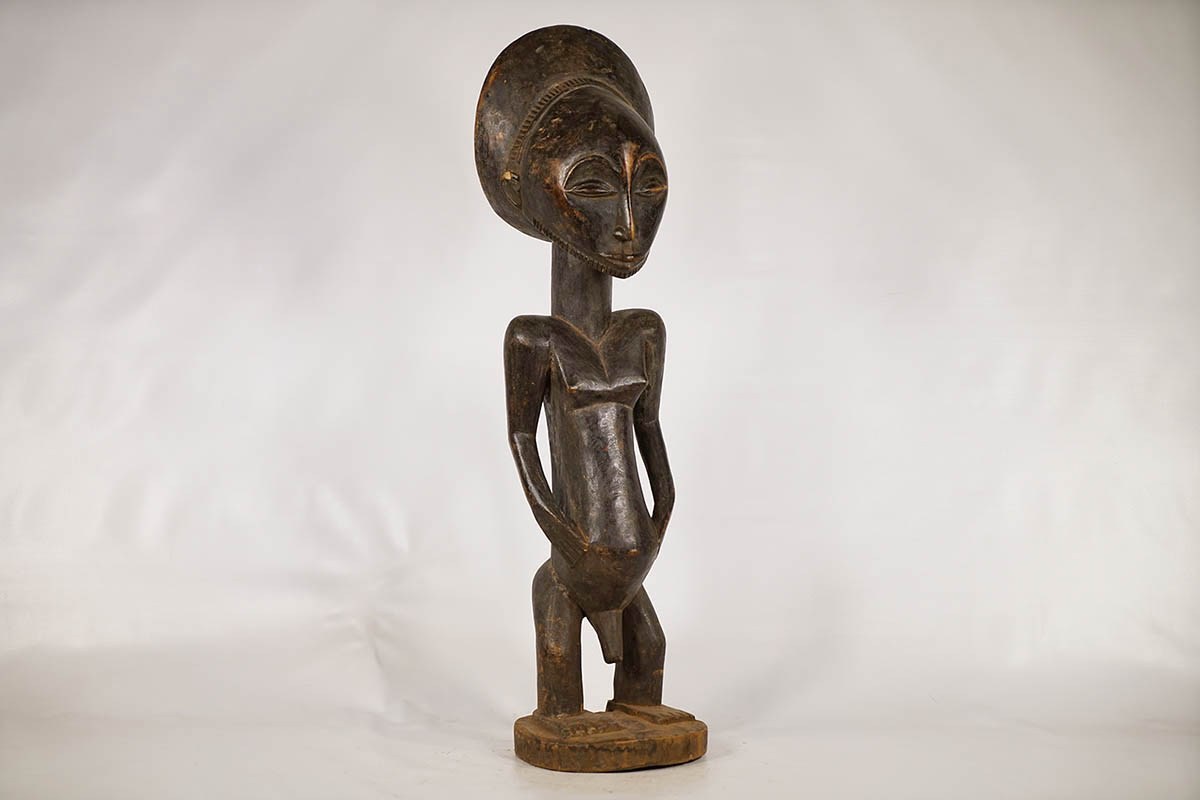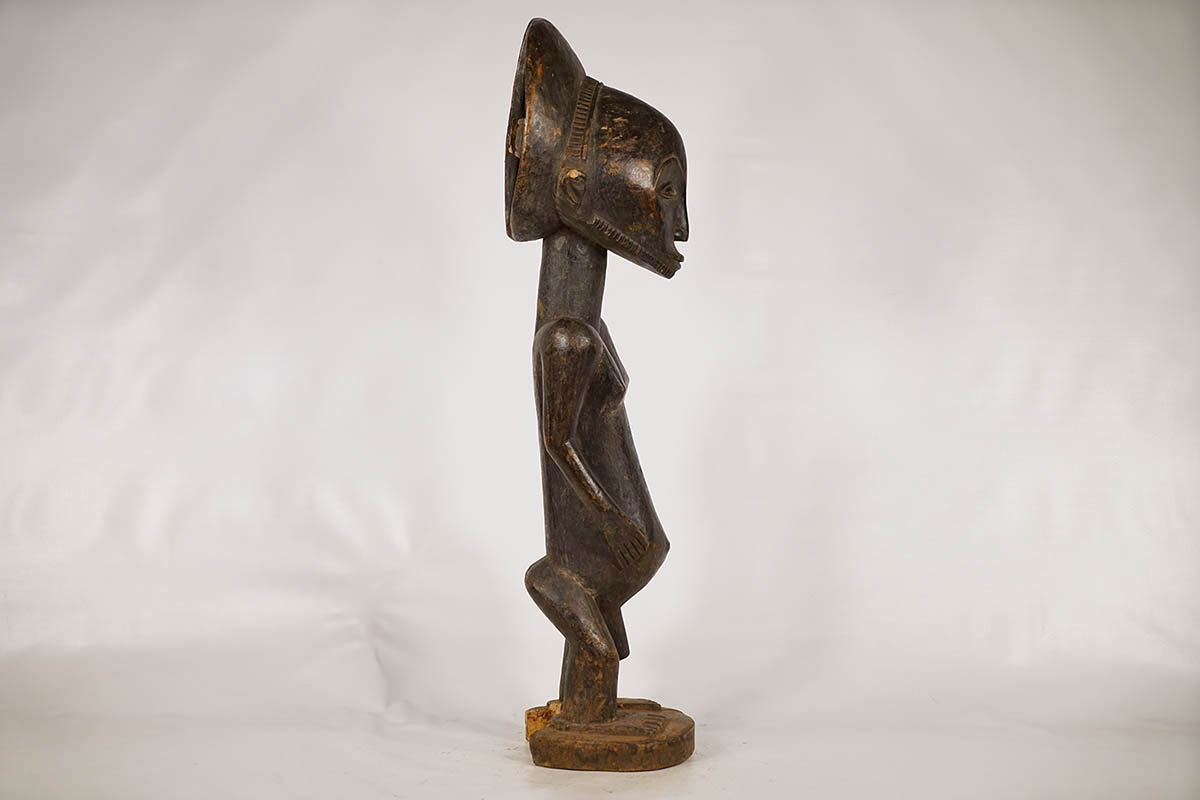This Hemba/Luba statue showcases a nude male figure. He has a handsome delicate face and shiny patina. The statue measures 33 inches tall and weighs 12 pounds. There is some wood deterioration around the base and a piece of his coiffure on the back has broken off. Scuffing and general wear and tear throughout. Please inspect photos carefully.
Handsome Hemba/Luba Male Figure 33″ – DR Congo – African Art
$140.00
Sold

| Type of Object | Figure, statue |
|---|---|
| Country of Origin | DR Congo |
| Ethnicity | Hemba|Luba |
| Material | Wood, Pigment |
| Approximate Age | Unknown |
| Height (Inches) | 33" |
| Width (Inches) | 9" |
| Depth (Inches) | 7.5" |
| Weight (Pounds) | 12 lbs |
| Overall Condition | Wood deterioration, piece of coiffure broken, wear and tear. |
You must be logged in to post a review.
Tribe Information
About the Hemba People
“During the 18th century, the Hemba people, led by their chief Niembo, migrated from the south-west and settled on the right bank of the Lualaba River, in a region of fertile savannah. Today, they number 80,000 and are divided into large clans which, by definition, are families with a common ancestor. The hereditary chief of each clan is called the Fumu Mwalo and is the keeper of the ancestor figures. He renders justice and his status as clan head means that he has a privilege of receiving numerous gifts. The Hemba live mostly from farming manioc, sesame, yams and beans. Secret societies such as Bukazanzi for the men and Bukibilo for the women counterbalance the Fumu Mwalo’s power.
Two types of Hemba mask have been identified so far: the first is the rarest and displays a perfectly symmetrical human face with a small mouth and a linear nose set between two slanted eyes. The second type of mask imitates a monkey face with a large, pierced, crescent-shaped mouth and pointed nose. The function and meaning of these masks remain obscure.”
Source:
Baquart, Jean-Baptiste. The Tribal Arts of Africa. New York: Thames and Hudson Inc. 1998. Print.
About the Luba People
“The Luba empire was founded in 1585 in the Upemba depression by King Kongolo. His nephew and successor, Kalala Ilunga, rapidly expanded the kingdom to encompass all the territories on the upper left bank of the Lualaba River. At its peak, about one million people, living in several tribes, were paying tribute to the Luba king. At the end of the 19th century, with the advance of the Ovimbudu people from Angola and the raids of the East African Muslim slavers, the empire weakened and, in fact, collapsed when Belgian colonials took control.
With the Assistance of a court of notables, called Bamfumus, the king, known as the Mulopwe, reigned over his subjects through clan kings called Balopwe/ These clan kings could symbolically become the Mulapwe’s son which created client states throughout the empire. A secret society, Bambudye, kept the memory of the Luba empire alive and permeated throughout Luba territory, bonding the diverse populations together. The Luba empire economy was complex – it was based on a tribute system and the redistribution of resources from agriculture, fishing, hunting and mining. The production of salt and iron was under the king’s control.”
Source:
Baquart, Jean-Baptiste. The Tribal Arts of Africa. New York: Thames and Hudson Inc. 1998. Print.







Reviews
There are no reviews yet.